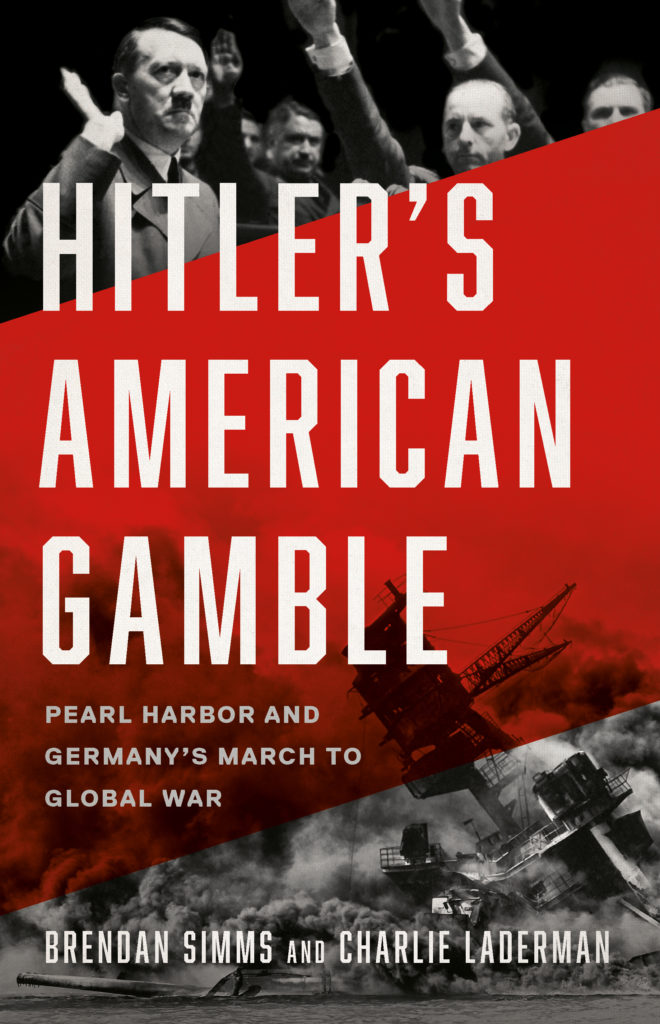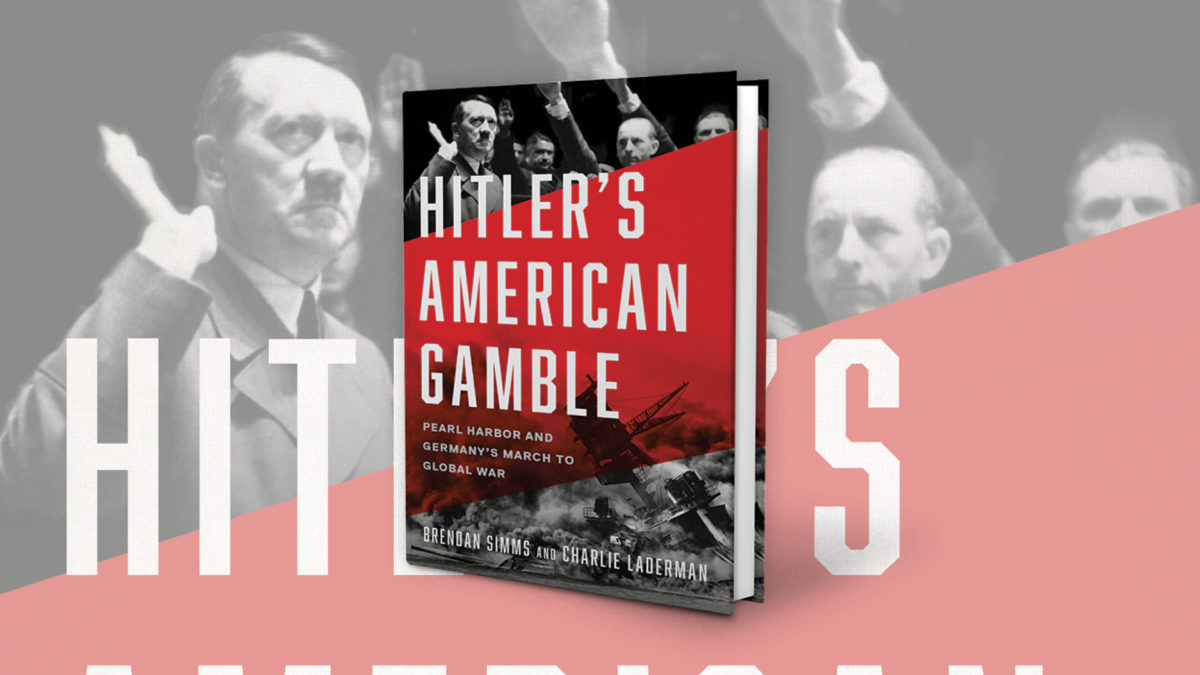A fantastic new crop of revisionist histories focused on World War II’s staggered beginnings and endings is adding nuance to scholarly and popular understanding of the global conflict. Marc Gallachio’s 2020 Unconditional presents the intense debates across Washington, DC, on how to end the war in the Pacific as a durable triumph of liberal internationalism over historical American anti-interventionism. Frederick Taylor’s 2020 book 1939 addresses extraordinary efforts made by many European leaders and diplomats to avoid another world war. To this list add Brendan Simms’s and Charlie Laderman’s similarly excellent Hitler’s American Gamble.
Few books demonstrate the superfluousness of counterfactual “history” as well as this one does. The coauthors offer a gripping blow-by-blow of the five-day span between Pearl Harbor and Germany’s December 12, 1941, declaration of war on the United States. In retrospect, many parties to the larger conflict, particularly those taking the American side, have cast American participation in a multi-theater war against the Axis as inevitable. Through an intensive transatlantic search of relevant archives, the authors show this not to have been so, recreating all sides’ uncertainty at a fraught moment. Each for its own reasons, Great Britain, the Soviet Union, and Japan eagerly sought Germany’s entry into a shooting war with the United States. Debate reigned in Washington and Berlin on how to handle the putative foe.
Hitler’s decision to declare war—the titular gamble—was more rational than often portrayed. The Führer was betting America would not be able to ramp up its war machine and continue to maintain the flow of Lend-Lease materiél, initially to Britain and then to the USSR. He expected a shortfall that would sap British capacity to repel German assaults and force the island nation to submit. Beefing with the Americans turned out to be Hitler’s ad hoc version of the Kaiser’s Schlieffen Plan of a quarter century before. By kayoing Britain and quickly Nazifying Western Europe, the former corporal theorized, the Reich could steel its forces to counter whatever the world’s largest industrial power might muster as a cross-ocean counter punch. It didn’t work out that way, in large part because the Allies did a remarkable job of coordinating their efforts while the Axis powers failed at forging a global strategy. Gamble’s dissection of December 1941 is unquestionably one of the most compelling and eye-opening monographs on World War II in recent memory.
This book review appeared in the Autumn 2022 issue of American History magazine.

Hitler’s American Gamble: Pearl Harbor and Germany’s March to Global War
By Brendan Simms and Charlie Laderman
Basic, 2021
This post contains affiliate links. If you buy something through our site, we might earn a commission.





